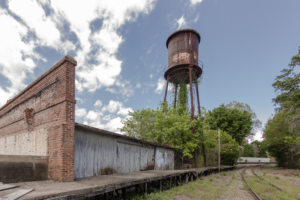Brownfields offer contracting opportunities to remediate properties

A large percentage of the most recent grant funding is being awarded for remediation of property that is being prepared for rather large community development projects.
As of February 2020, under the Environmental Protection Agency (EPA) Brownfields Program, 31,516 properties had already been assessed and 92,047 acres of idle land has been made ready for productive use. Communities are using brownfield grant funding to attract more revenue for redevelopment. It appears to be working well because more than $31 billion in additional funding has been secured.
In May of 2020, the EPA announced 155 awarded grants totaling $65.6 million for brownfield projects. The funding will flow to communities where parcels of land that could be a target for reuse are ready for remediation of hazardous substances, pollutants, or contaminants. And, interestingly enough, nearly 30 percent of the communities selected for funding are located in designated Opportunity Zones so the properties will be even more attractive to investors because of tax incentives.
An estimated 450,000 brownfields exist in the United States, and redevelopment is a high priority for many regions of the country. Private sector contractors and/or investors interested in public projects will be in high demand and the preferential tax treatment that is available should be a significant incentive.
New York
Officials in the town of Riverhead have announced plans to use $5 million to purchase blighted buildings in an effort to make way for a new town square. The hope is that a public-private partnership initiative can be launched and the redeveloped town square can be connected to the riverfront. The collaborative initiative also will result in another critical objective which is to mitigate long-standing flooding issues. Once the blighted buildings have been removed and the remediation has been completed, officials will begin an effort to secure additional grant funding from Suffolk County and the state for construction of the square. Once that is accomplished, a search will begin for a private-sector partner.
In another part of New York, the city of Rochester has issued a request for qualifications that will remain open through September 28 for a master developer to provide assistance in another redevelopment project. The Bull’s Head neighborhood area in Rochester is ripe for redevelopment, and local officials believe it will qualify as a New York State Brownfield Opportunity. The objective currently underway is to secure the funding and then select a master developer to work with neighborhood stakeholders to finalize all plans for the redevelopment project. There will be an outreach to select private-sector partners once the final plan is completed.
Michigan
In June, the Ann Arbor City Council voted partner with the Ann Arbor Housing Commission and a consultant in an effort to pre-entitle some properties prior to issuing a request for qualifications or proposals to redevelop a brownfield site. The consultant will conduct an assessment to determine future uses of the land and direct planning for the remediation of some older buildings that have environmental issues. The initial objective will be to renovate and remediate the property in order to market it to developers.
Wisconsin
The city of Madison has a $300 million plan for redevelopment on a 72-acre industrial site that housed a former meat processing plant. City leaders want to connect the north and east side of the city, create a public transit facility, a bicycle hub, and a walkable commercial district that includes both mixed-use and residential areas. Additionally, the plan calls for preserving 16 acres of the Hartmeyer Natural Area for wetlands and open space. The city will use funding that has been made available from a brownfield grant from the EPA.
Oklahoma
City leaders in Tulsa have announced plans to restore the historic Evans Building and preserve it to serve as the anchor for a yet-to-be defined economic development project. A consultant has been hired to conduct an economic feasibility study and to recommend development options. An 11-acre piece of property that was formerly a brownfield is the focus of the project. It once housed an ironworks and supply company. The community’s vision includes the development of restaurants, a hotel, retail space, a movie theater and a small events center. A request for proposals (RFP) for developers will be issued by early 2021.
Maine
In 2019, the town of Camden received a brownfield grant to remediate the soil at Tannery Park so it can be developed. The cleanup site once operated once as a woolen mill and later as a tannery. A solicitation document seeking developer interest is anticipated later in 2020.
Hundreds of cities, townships, and boroughs of every size are interested in finding development partners, and the brownfield grants have become critical components of successfully launching new initiatives. Taxpayers benefit significantly when public assets are recycled to become more productive and/or revenue producing.
Strategic Partnerships, Inc. (SPI) is leading the way in the rapidly expanding area of public-private partnerships. Learn about SPI’s service offerings in both the public and private sectors by contacting them today.

 512-531-3900
512-531-3900 Request More Info
Request More Info